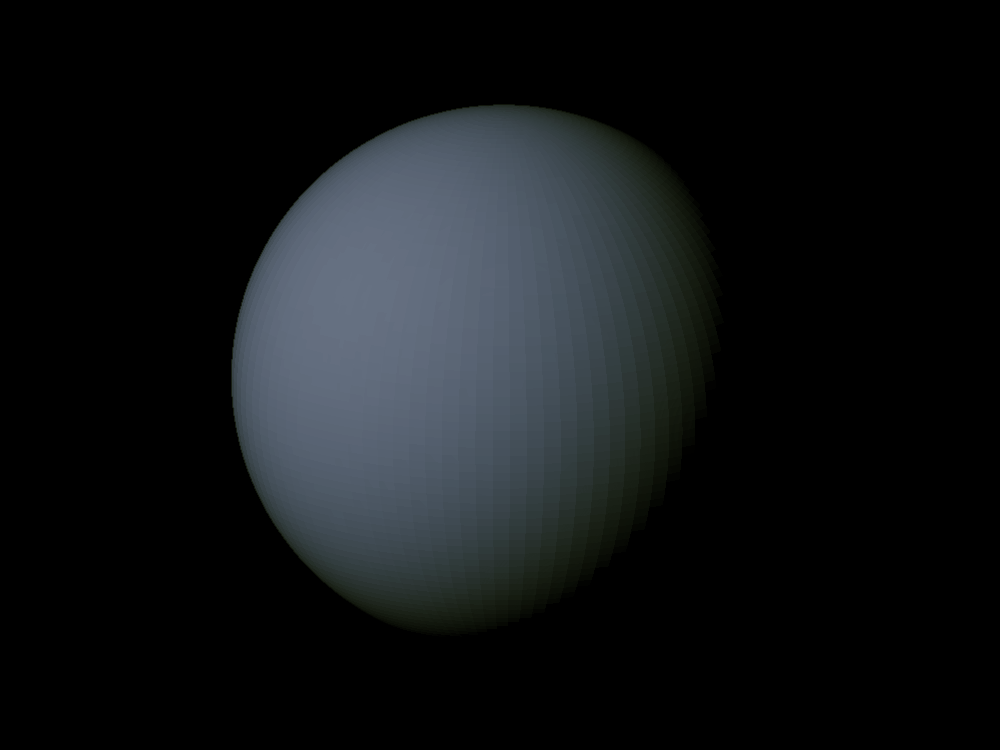
Planet Nine scaled one in 250 million
prusaprinters
<p>Originally published here: <a href="https://www.thingiverse.com/thing:3824621">Planet Nine scaled one in 250 million by tato_713 - Thingiverse</a></p><p>This is a representation of how it could be in size the hypothetical planet beyond Neptune, proposed by many astronomers, nicknamed "Planet Nine". It is just a sphere made with Microsoft 3D Builder and scaled in the same scale of other planets like the <a href="https://www.thingiverse.com/thing:3612782">Earth</a> and <a href="https://www.thingiverse.com/thing:3855305">Neptune</a> or <a href="https://www.thingiverse.com/thing:3881995">Uranus</a>; assuming a radius of 2.5 Earth radius. Remember that this planet has no direct evidence of its existence, and it remains as speculative.</p><h4>"Planet nine"</h4><p>Since the discovery of Neptune, it's being speculated that a giant object may be orbiting beyond it, because of anomalies on the planet's orbit. The hypothetical planet could do this deviations by the influence of its mass. <a href="https://www.thingiverse.com/thing:3321413">Pluto</a> seemed to fill this definition, but was soon noticed that its mass is too low. Since then, the disturbances in the orbit of Neptune were regarded as errors. The discovery of Trans-Neptunian objects with high eccentricity and a large perihelion like <a href="https://www.thingiverse.com/thing:3442743">Sedna</a> takes to the idea that these objects were scattered by a bigger body. These objects, named Sednoids, and the extreme TNOs (with similar extreme orbital parameters) share approximate the same direction of their eccentricities. Batygin and Brown proposed that an orbiting object of several times the mass of the Earth with the eccentricity pointing in the opposite direction of that of the sednoids could solve this problem. The WISE sky survey has ruled out the presence of anything bigger than Neptune beyond its orbit and within the Solar System boundaries, and an Earth mass object is not heavy enough to fit the requirement these perturbations, so it is estimated that the Planet Nine is between 5 and 10 Earth masses, and between 2 and 4 times its radius. Other causes could explain the "evidence" for the Planet Nine hypothesis, like a past close passing star, or observational bias.</p><p><strong>Type:</strong> Planet. </p><p><strong>Orbit:</strong> Sun. </p><p><strong>Orbital period:</strong> 10000 to 20000 yr </p><p><strong>Composition:</strong> Rocky, gaseous, or something between them. </p><p><strong>Model scale:</strong> 1:2.5x108 (13cm) 1:5x108 (6cm)</p><p> </p><figure class="table"><table><tbody><tr><td><figure class="image image-style-align-center image_resized" style="width:75%;"><img src="https://media.prusaprinters.org/media/prints/57328/rich_content/4995476f-cfc8-45cf-b325-f5d36a6fed08/planet_nine.png#%7B%22uuid%22%3A%22e3b71b82-9a02-463c-b29f-36f16a1f3dc2%22%2C%22w%22%3A958%2C%22h%22%3A704%7D"></figure></td></tr><tr><td>Earth in light blue, Planet Nine hypothetical size in white, and Neptune in dark blue</td></tr></tbody></table></figure><p> </p><h3>Other astronomical objects</h3><p><a href="https://www.prusaprinters.org/social/120859-tato_713/collections/49826">Inner Solar System</a></p><p><a href="https://www.prusaprinters.org/social/120859-tato_713/collections/49832">Artificial</a></p><p><a href="https://www.prusaprinters.org/social/120859-tato_713/collections/49820">Near Earth Asteroids</a></p><p><a href="https://www.prusaprinters.org/social/120859-tato_713/collections/49291">Main Belt Asteroids</a></p><p><a href="https://www.prusaprinters.org/social/120859-tato_713/collections/49829">Jovian System</a></p><p><a href="https://www.prusaprinters.org/social/120859-tato_713/collections/49828">Saturn System</a></p><p><a href="https://www.prusaprinters.org/social/120859-tato_713/collections/49830">Uranian System</a></p><p><a href="https://www.prusaprinters.org/social/120859-tato_713/collections/49345">Neptunian System</a></p><p><a href="https://www.prusaprinters.org/social/120859-tato_713/collections/49827">Centaurs</a></p><p><a href="https://www.prusaprinters.org/social/120859-tato_713/collections/49833">Comets</a></p><p><a href="https://www.prusaprinters.org/social/120859-tato_713/collections/49341">Trans Neptunian Objects</a></p><p><a href="https://www.prusaprinters.org/social/120859-tato_713/collections/49824">Extrasolar Objects</a></p><p><a href="https://www.prusaprinters.org/social/120859-tato_713/collections/49837">Sky Maps</a></p><p><a href="https://www.prusaprinters.org/social/120859-tato_713/collections/49831">Ancient</a></p><p><a href="https://www.prusaprinters.org/social/120859-tato_713/collections/49822">Speculative</a></p><p><a href="https://www.prusaprinters.org/social/120859-tato_713/collections/49821">Science Fiction</a></p>
With this file you will be able to print Planet Nine scaled one in 250 million with your 3D printer. Click on the button and save the file on your computer to work, edit or customize your design. You can also find more 3D designs for printers on Planet Nine scaled one in 250 million.
